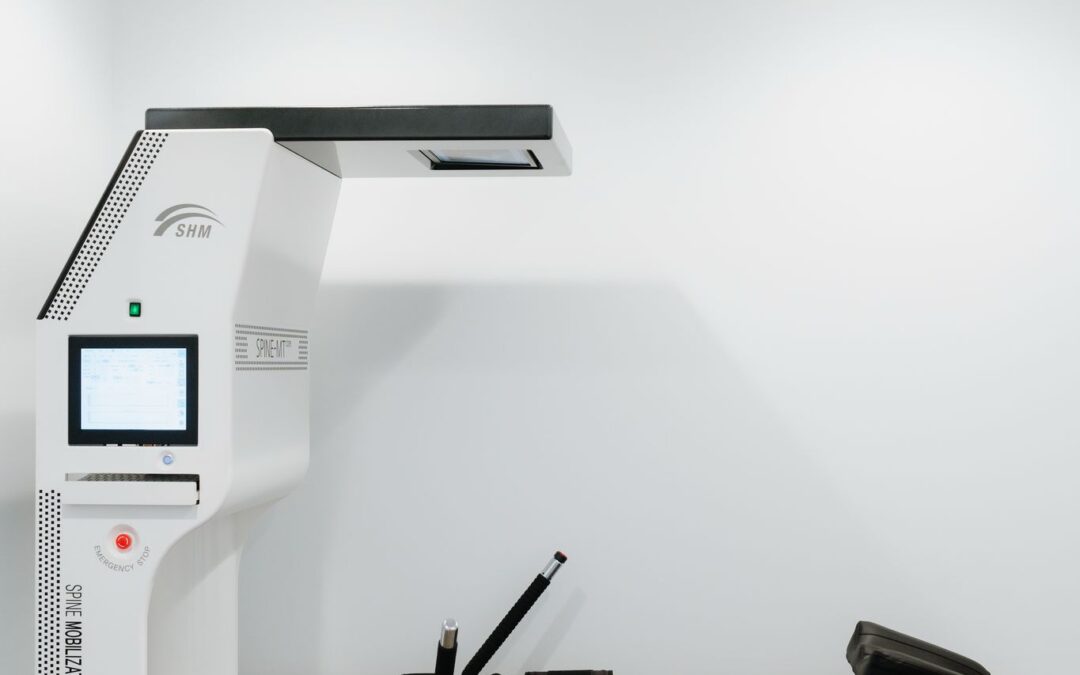If you’ve ever dealt with nagging back pain, sciatica, or a herniated disc, you might’ve stumbled across non-surgical spinal decompression as a potential fix. It’s a therapy that promises relief without going under the knife—no scalpels, no stitches, just a high-tech table and some clever science. But how does it actually work? Let’s break it down step-by-step, sprinkle in some facts, and point you to resources if you want to dive deeper.
What’s the Deal with Spinal Decompression?
Picture this: you’re lying on a fancy motorized table, strapped in with harnesses like you’re about to embark on a gentle sci-fi adventure. That’s the starting point of non-surgical spinal decompression, a treatment designed to take the pressure off your spine—specifically the discs, nerves, and spinal cord. It’s popular for tackling issues like bulging discs, degenerative disc disease, sciatica, and even spinal stenosis. The goal? Less pain, better movement, and a chance for your spine to heal naturally.
Here’s how it goes down:
Step 1: Getting Comfy on the Table
You’ll lie down on a specialized decompression table—think of it as a souped-up chiropractor setup. If it’s your lower back (lumbar spine) in the hot seat, straps go around your pelvis and torso. For neck woes (cervical spine), they secure your head and neck. The table’s hooked up to a computer that controls the whole show, tailoring the experience to your needs.
Step 2: The Gentle Pull
The magic happens when the table starts pulling—gently, mind you. It’s not some medieval rack situation; it’s a controlled, intermittent traction that stretches your spine in a precise way. The force depends on your weight, condition, and how much you can handle. Unlike old-school traction, this cycles between pulling and relaxing, zeroing in on the trouble spot.
Step 3: Creating a Vacuum Effect
Here’s where it gets cool: as your spine stretches, it creates negative pressure inside the discs—those cushy pads between your vertebrae. Think of it like giving your spine room to breathe. This vacuum effect does two big things:
- Pulls Discs Back: If you’ve got a bulging or herniated disc pressing on a nerve, this negative pressure might coax it back into place, easing that pinch.
- Feeds the Discs: Discs don’t have their own blood supply, so they rely on soaking up nutrients like oxygen and water from nearby tissues. The decompression helps that process along, potentially kickstarting some healing.
Step 4: Relax and Realign
While the table does its thing, your tight muscles and ligaments get a chance to chill out. This can improve your spinal alignment and cut down on those pesky spasms that make back pain worse.
Step 5: Rinse and Repeat
One session usually lasts 20-45 minutes. Depending on how bad your spine’s feeling, you might sign up for 15-30 sessions over a few weeks. It’s not a one-and-done deal—it’s more like a slow-and-steady rehab plan.
The Simple Version
Imagine your spine as a stack of blocks with cushions in between. Life squishes those cushions, sometimes making them bulge and annoy your nerves. Decompression gently pulls the blocks apart, letting the cushions bounce back and soak up some healing goodies. Easy, right?
What It’s Good For
This therapy’s a go-to for:
- Herniated or bulging discs
- Worn-out discs (degenerative disc disease)
- Sciatica’s shooting pain
- Posterior facet syndrome
- Chronic neck or lower back aches
But it’s not for everyone. If you’ve got severe osteoporosis, a spinal fracture, or a tumor, this isn’t your jam—safety first.
Dig Deeper with These Resources
Want to geek out on the details? Check these out:
- Choi, J., et al. (2016). “The Effects of Spinal Decompression Therapy on Pain and Disability in Patients with Chronic Low Back Pain.” Journal of Physical Therapy Science. Look up “PMID: 27821958” for the goods.
- Ramos, G., & Martin, W. (1994). “Effects of Vertebral Axial Decompression on Intradiscal Pressure.” Journal of Neurosurgery. A classic if you can snag it through a library.
- WebMD’s Spinal Decompression Overview (2023). Super accessible rundown—search “WebMD spinal decompression” or hit https://www.webmd.com/back-pain/spinal-decompression-therapy-surgical-nonsurgical.
- American Chiropractic Association. Peek at their take on it—try www.acatoday.org and search their resources.


